
Call us FREE 0808 2394 989
Opening Hours - Office open, we'll close at 8:00pm

Call us FREE 0808 2394 989
Opening Hours - Office open, we'll close at 8:00pm
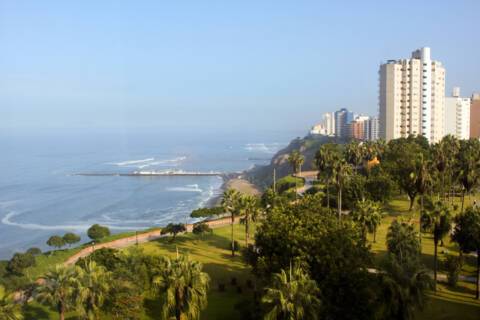
The colourful capital of Peru, Lima has long been renowned for its rich history.
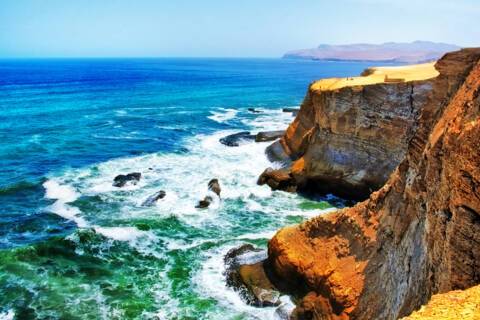
The port city of Paracas is blessed with magnificent natural beauty and rich historical importance, offerings inviting beaches, ideal weather and pleasant scenery — a combination that draws visitors throughout the year. The shores of the Paracas Peninsula and waters of the bay teem with wildlife and have been declared a national reserve. Condors frequently can be seen gliding on the sea winds or perched on the cliffs; pink flamingos often rest here on their migratory flights. View less The complex interaction between wind and ocean, sun and land has transformed this region into a kind of lunarscape under an equatorial sun. Another reason for travellers to come to this area is its proximity to the famous and mysterious Nazca Lines. Visible from the air, these strange markings stretch for miles on a large barren plain and have bewildered archaeologists, historians and mathematicians since their discovery over a century ago. The earliest Andean people found shelter here. The Paracas culture was known for fine weavings in geometrical designs and vibrant colours, which have been preserved for thousands of years by the dry climate. Some of the finest examples are in museums in Lima. The town of Ica is Peru’s finest wine centre, as well as home to the fiery brandy-derived beverage known as Pisco. The surrounding area features oases with springs considered to have medicinal cures. Pier Information The ship is scheduled to dock at Port of Paracas, about a 45-minute drive from Ica. There are no passenger facilities at the pier. Shopping Shopping opportunities are limited; some souvenirs can be found at the museum in Ica. A bottle of Peruvian Pisco (grape brandy) makes a nice memento. The local currency is the nuevo sol. Cuisine Seafood is highly recommended, however, we recommend you dine only in the hotel restaurants in Peru’s southern region. Be sure to sample the national drink pisco sour and the area’s excellent wines. Always drink bottled water and avoid ice cubes. Other Sites The Bay of Paracas is sheltered by the Paracas peninsula, noted as one of the best marine reserves in the world. This is also a popular resort area thanks to its beautiful bay, beaches and dependable warm weather. Facilities include swimming pools, tennis courts, miniature golf and a good restaurant. For those who are looking for a little adventure dune buggies are available. Local boat trips can be booked to the Ballestas Islands but be aware that commentary is given in Spanish. Private arrangements for independent sightseeing are limited in this port as cars have to come from Lima. Please submit your request to the Tour Office early in the cruise.
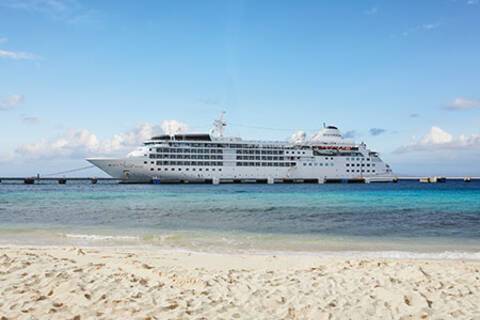
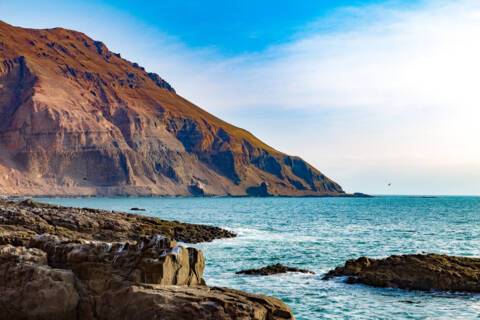
Arica is Chile’s northernmost city and the capital of the Region of Arica and Parinacota. Its 240,000 inhabitants make up almost 98% of the region’s population. With an average temperature of 18 degrees Celsius Arica is known as the “city of eternal spring”. Although it is within the Atacama Desert, one of the driest places in the world, and several years can pass before it rains in the city, a fertile river valley dissects it. Fruit and vegetables are produced there and Arica is famous for its olives. Arica’s port had been important for the Spanish Empire since 1545 when silver was brought down to the coast from Potosi (Bolivia) –this attracted English and Dutch pirates which looted Arica on several occasions. Today the port serves as a free port for goods from landlocked Bolivia. Arica belonged to Peru until 1880, when Chilean troops took the “El Morro” hill above the port during the War of the Pacific. It is possible to walk up to the giant flagpole and small military museum on the hill, from where there are excellent views across the city, port and valley. Attractions in or near Arica include the Museum of Azapa dedicated to the Chinchorro culture with the oldest mummies in the world going back 7,ooo years, several beaches and three buildings said to have been designed by Eiffel.


If archaeological zones, landscaped plazas and well, giant hands, are your travel cup of tea then look no further than Antofagasta. Set between the Pacific Ocean and the mountains, the city is Chile’s second most populated place, and by far the largest in the northern region. Once the country’s primary export port, notably for minerals including nitrate and later, silver, today Antofagasta is still the country’s centre for mineral mining. Antofagasta was once part of Bolivia, and only became Chilean in 1904 after it was captured in the War of the Pacific. Under the subsequent treaty, Chile agreed to construct a rail link to Bolivia in return for the city. Today the city still enjoys relative stress free travel to La Paz, through some of the most scenic and spectacular landscapes in the world. The railway link, which extended south as well as north, naturally brought colossal growth, expansion which is still continuing today. In recent years, Antofagasta has seen high rise hotels and buildings sprout up amid the jumble of old-fashioned plazas, former Railway Stations, and wooden-fronted Victorian and Georgian buildings that can be found along the Barrio Histórico. The city borders the arid Atacama Desert, aka the world’s driest place. As if the lunar like landscape was not enough, the aforementioned “Hand of the Desert”, an 11-metre tall sculpture of a hand reaching up to the stars is located about 60 km from Antofagasta, and is surely a must for anyone who is interested in alien experiences.
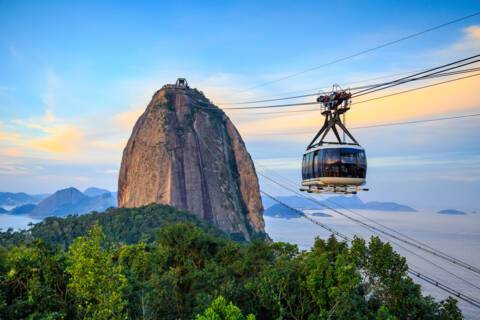
Isla Pan de Azucar is the largest of several rock formations of highly metamorphosed sandstone and mudstone in front of a small ranger station at Caleta Pan de Azucar within the Pan de Azucar National Park. The national park of 43754 hectares straddles two of Chile’s regions, but just 1.1 square kilometers are formed by Isla Pan de Azucar, the neighboring Las Chatas islets and Las Mariposas (Butterfly) rocks. View less To protect the South American sea lions and elusive marine otters seen on the island and islets, the park does not permit landings. Ships are not allowed to anchor either and even Zodiacs cruising along the shores need to be accompanied by local boats. During a Zodiac cruise several bird species including Humboldt Penguins, Inca Terns, Kelp Gulls, Peruvian Boobies, as well as Peruvian Pelicans, Peruvian Diving-Petrels, Red-legged Cormorants, and Turkey Vultures might be seen closer.
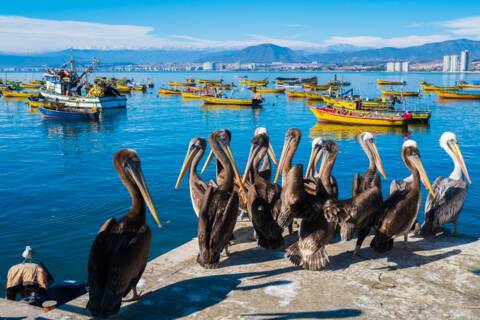
The name Coquimbo is derived from a native Diaguita word meaning 'place of calm waters'. In fact, Charles Darwin had noted that the town was 'remarkable for nothing but its extreme quietness'. Since then, Coquimbo has developed into a bustling port and the region's major commercial and industrial centre from which minerals, fish products and fruits are exported. Used during the colonial period as a port for La Serena, Coquimbo attracted attention from English pirates, including Sir Francis Drake, who visited in 1578. Visitors enjoy strolling around the town, admiring some of the elaborate woodwork handcrafted on buildings by early British and American settlers. These wooden buildings are among Chile's most interesting historical structures. Out of town, the area offers some fine beaches in a desert-like setting. Coquimbo serves as a gateway to the popular resort town of La Serena and trips farther into the Elqui Valley, known as the production centre for Chile's national drink, pisco sour. The valley is also home to several international observatories that take advantage of the region's exceptional atmospheric conditions.
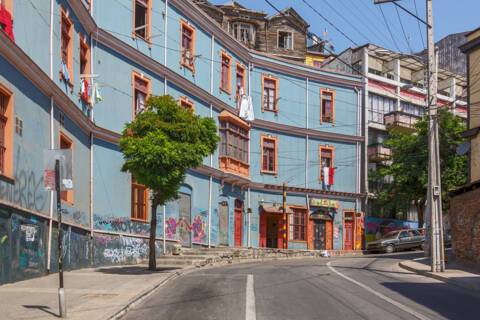
Situated on a number of steep hills, Valparaiso’s kaleidoscope of graffiti and murals are a sight to behold. Perfect for keen walkers.
View prices as:
Your current viewing preference is:
Per Person Pricing
* Prices shown are per person, based on two adults sharing a twin cabin and include all cruise offer discounts and savings.

LOADING
| Deck | Price | Enquire | |
| G1 | Deck 7 | Enquire now |
| Deck | Price | Enquire | |
| G2 | Grand 2 Suite | Enquire now |
| Deck | Price | Enquire | |
| O1 | Deck 7 | Enquire now |
| Deck | Price | Enquire | |
| O2 | Owner's 2 Suite | Enquire now |
| Deck | Price | Enquire | |
| R1 | Deck 6 | Enquire now |
| Deck | Price | Enquire | |
| R2 | Royal 2 Suite | Enquire now |
| Deck | Price | Enquire | |
| SL | Deck 5 | Enquire now |
| Deck | Price | Enquire | |
| VI | Deck 4 | Enquire now |
| Deck | Price | Enquire | |
| DX | Deck 5 | Enquire now |
| Deck | Price | Enquire | |
| CV | Deck 5 | Enquire now |
As spacious as a grand hotel, as gracious as a best friend's home, the lifestyle on board Silver Wind is one of fewer guests, more space and boasts Silversea’s renowned personalised service.
What’s on board: Boutique, Changing Room, Conference Room, Connoisseur’s Corner, Dolce Vita, Expedition Office, Fitness Centre, Jogging Track, La Dame, La Terrazza, Laundrette, Medical Center, Observation Library, Panorama Lounge, Photo Studio, Pool Bar, Pool Deck, Reception, The Grill, The Restaurant, The Show Lounge, Zagara Beauty Spa and much, much more.

Shore excursions are available to book in advance via My Silversea until 2 days prior to sailing.
Shipboard attire ranges from casual to formal. Casual wear is appropriate for daytime aboard the ship or ashore and consists of standard sports outfits as worn at 5-star resorts. Evening attire falls into 3 categories; casual, informal and formal.
The currency used onboard Silversea is US Dollars.
Gratuities are included in the price of your Silversea cruise.
Yes, guests can take alcohol on their Silversea cruise. There are no limitations.
SAVINGS are based on per person, for UK mainland addresses only when booking by 8pm 30th November 2024. Other exclusions may apply.